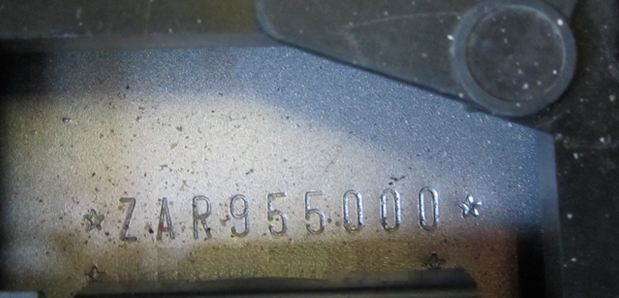
VIN – Vehicle Identification Number is also called chassis number is a unique number of every vehicle, which contain a lot of information about car. VIN contain information like:
- country of production
- year of production
- type of drive
- engine version and equipment
VIN numbers were first used in 1954 in the United States. Car manufacturers, for example Honda already mark their cars the most popular models were: Accord, Civic, CRX, Integra, NSX, Prelude, CR-V, HR-V, Jazz.
In the year 1981 Highway Traffic Safety Administration in USA set conventional format of VIN. Sold cars should to have VIN number contain 17 characters, which don’t have letters I (I), O (o) or P (q) (that avoid mistakes to number 1 and 0). The common system make easier work for: police, insurance companies and sellers. Since that time every car has VIN number with length 17 letters and number.
In present world we have at least four standards used to calculate the VIN:
- FMVSS 115, Part 565: Used in United States and Canada
- ISO Standard 3779: Used in Europe and many other parts of the world
- SAE J853: Very similar to the ISO standard
- ADR 61/2 used in Australia
VIN decoder at Honda – enter the body number
Remember that before you buy, check the history of the vehicle. You do this by typing the VIN Number Honda below:
It is worth deciphering the VIN before buying the vehicle, to make sure that you are actually paying for what you are buying. Unfortunately, it may turn out that the new equipment negatively affects the vehicle and frequent visits to the dealership will be necessary. By checking the VIN we are also able to determine whether the vehicle has accidentally entered the country illegally. This is unfortunately an increasingly frequent problem.
VIN number – what is it?
The VIN, or Vehicle Indentification Number, is a unique vehicle identification number that contains numerous and important pieces of information about a car. VIN includes information such as country of manufacture, model year, drive type, engine version, equipment options, among others.
VIN numbers were first used in 1954 in the United States. Car manufacturers such as Audi were already marking their cars in this way. Marking of this type began to be used by manufacturers in Europe. However, the first numbers looked very different. It was not until the 1980s (in 1981 to be precise) that the world’s manufacturers, together with the US manufacturers, finally agreed on this issue.
In 1981, the National Highway Traffic Safety Administration in the United States standardised the format. Cars sold should contain a 17-character VIN that does not contain the letters I (I), O (o) or P (q) (to avoid confusion with the numbers 1 and 0).
A common standard has therefore been developed to facilitate the work of the police, insurance companies and used car dealers. From now on, the VIN of each car has 17 characters – letters and numbers


 EN
EN  PL
PL  RU
RU  DE
DE  HU
HU  EE
EE  LV
LV  RO
RO  SI
SI  CZ
CZ  LT
LT 